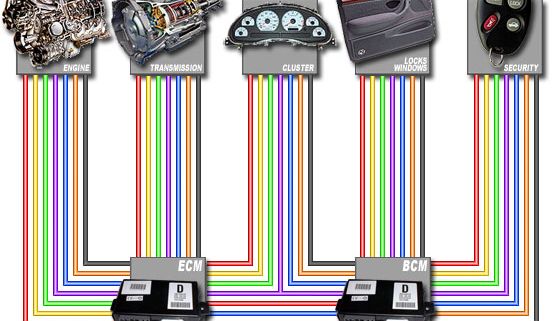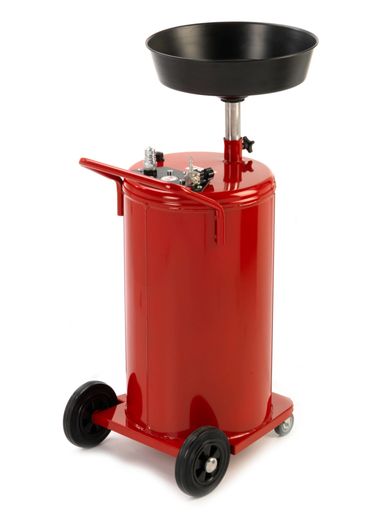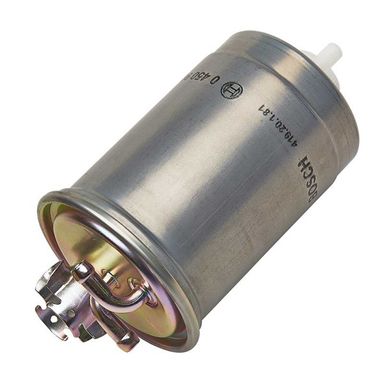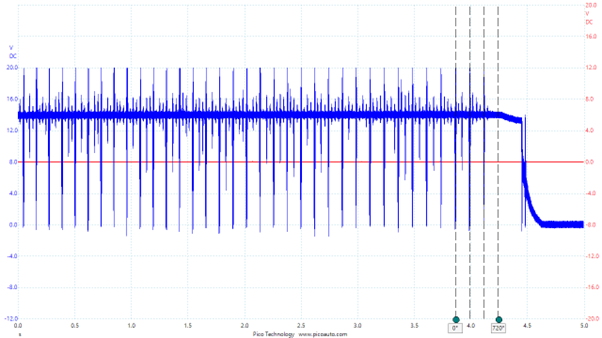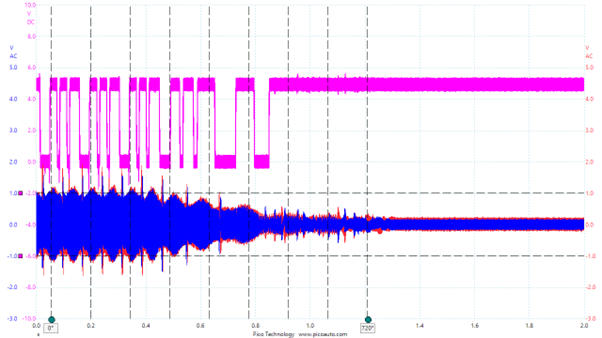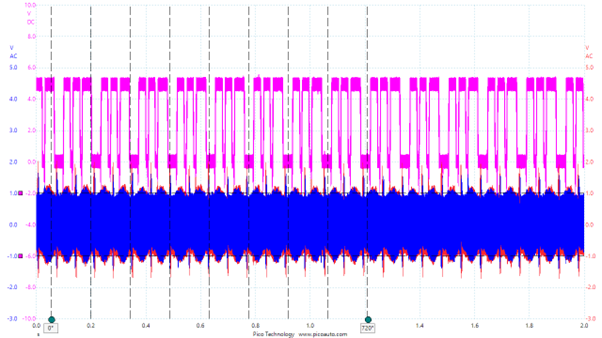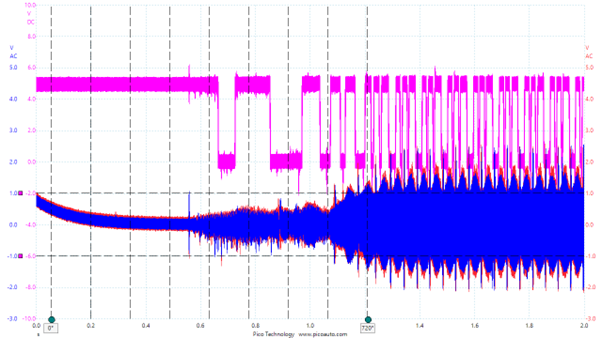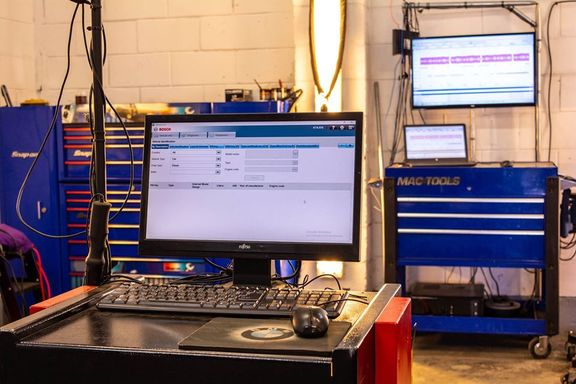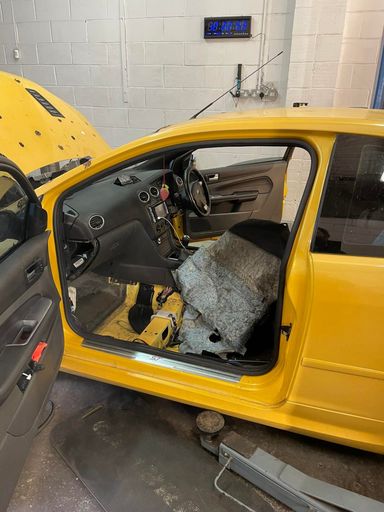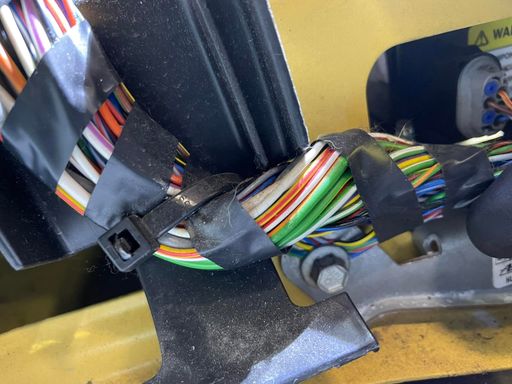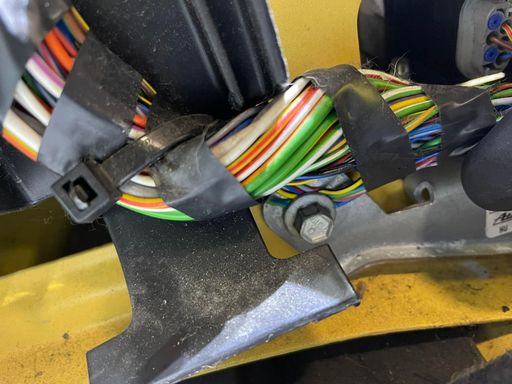Jays Blog
Test, Not Guess. 05.10.22
As part of our day to day job we encounter numerous vehicles that come to us from other garages, some of these faults can be quite complex and the reason the other garage was not able to fix the issue. All too often though we get a vehicles brought in to us where the customer or the last garage has fitted several parts to the vehicle without fixing the issue at hand.
In the trade we call this the “Parts Cannon”, and it can sometime be quite extreme with hundreds of pounds of parts having been fitted and still no fix. This can be due to different reasons with the main one being social media and google. The times we see on forums people asking questions as to what will cause their engine warning light to come on the dash, and the answer from the keyboard mechanic saying “Oxygen sensor” or “MAF”.
The second issue in my opinion is the worst one, too little knowledge. Cheap scanners are everywhere with companies marketing them as a way to stop your mechanic ripping you off. Add this to the misconception that all we do is plug in and the computer tells us what is wrong and you have a recipe for problems. All too often do we see a MAF (Mass Air Flow) sensor has been fitted because the fault code said signal from MAF sensor incoherent.
What the fault code is telling you is not that the MAF is faulty, Its telling you that the reading it is getting dose not match what it expects to see. There could be many reasons for this including an air leak or restriction. Quite often this can turn out to be a split boost pipe or stuck EGR valve. Being able to test these components both externally and as part of the system with live data is key to accurately diagnosing these issues correctly first time.
Understanding how these systems works is the basis for creating a solid test plan that allows you to confirm or rule out the cause of a fault. You may get lucky and fit the correct part but this is normally after an extended period of getting it wrong and costing money. There is no worst a feeling than knowing that the work and money to have just spent on the vehicle was for nothing and the fault is still there.
But there is no better feeling than being able to test a part and in most cases bypassing the bad part to prove you are correct and know that the part you fit will fix the issue. This comes down in the most part to training and the level of knowledge held by the technician and not experience. I know lots of time served mechanics who have been in the trade years and that are very good at their job but when faced with a technical issue they fall to pieces.
This is where a technician comes in, using their expert knowledge of the latest systems and specialist test equipment, they are normally tasked with finding the fault when other fail. they are not super human, just invested in training and the right tools. This is normally reflected in the labour rate, which will most likely be higher but end up with you paying less in the long run.
Don’t be fooled by cheap prices, more often than not the level of service is also lower.
Jays Blog
Beyond a mechanic. 23.9.22
Newer vehicle are packed with technology, up to 152 computers (Modules) can be fitted to just one vehicle. Engine, brakes, power steering, body control, door control, heating control, information display, airbag and so many other. These systems are designed to talk to each other over a network and share information vital to the vehicles smooth running and safety.
The common old school mechanic is now a thing of the past, with most mechanics now becoming technicians. Constantly updating their skills with training programs. Working hard to stay up to date with the latest technology in order to quickly and accurately repair modern day vehicles.
They also invest heavily in new tools and specialist test equipment in order to communicate and pull information from the vehicle. This in turn allows them to monitor the vehicle and get a better understanding of what’s going on. Yes you can “Plug in” and pull fault codes from the vehicle and these will quite often but not always point you in the right direction. However knowing how to read the information from live data and fault codes is key to correctly diagnosing the faults cause.
It is very important that the technician knows how to use this data as well as being able to perform tests to confirm it. As parts prices increase, the days of getting one and trying it have come to an end. Most new parts now can not be fitted and then sent back and sometimes even have to be coded to the vehicle and can only be coded to one vehicle. If a technician fits a new part and it does not fix the fault, who pays for the parts.
It is for these reasons that training is very important, Only when a technician fully understands the system they are working on can they isolate the cause of the problem accurately and quickly. Afterall you don’t want to pay for parts you didn’t need or extra hours because the mechanic struggled to find the fault through lack of training and knowledge.
Jays Blog
Keeping your car well maintained is very important for several reasons. 21.9.22
Reliability.
No one wants to break down in their car, especially on a cold, wet and dark night in the middle of nowhere. Regular checks to your vehicle car help prevent this by inspecting your vehicle for wear and tear. As part of a service the technician will look over your vehicle for any signs of trouble and inform you. They can even inspect your brakes to see how worn they are and estimate how many miles you have left before they need changing. If they find any issues, they can quote you to repair them before they cause you a problem.
Last longer.
Just like anything else a vehicle needs looking after, the better its looked after the longer it will last. Changing things like the engine oil and filter regularly can prevent excessive wear to engine components that rely on the oil to lubricate them. Over time the oil will absorb water from the atmosphere as well as dirt particles and carbon from the engine, It can also get diluted with unburnt fuel that creeps by the piston rings. All of this reduces the oils ability to properly lubricate and protect the engine from wear.
Higher resale value.
Most people when buying a second-hand vehicle like to know its been looked after and service both correctly and regularly. This is because a car that has done 40,000 miles but never been serviced will most likely have more wear to the engine that a car that has done double the mileage but serviced according to the manufactures guidelines. Most cars have a warning that pops up on the dash to tell you if it needs a service or the information can be found in the owners handbook.
Are all service's equal.
No, they are not and this can be a problem. Most manufacturers have service schedules that not only tell you when the car needs a service but also what service is required. For instance brake fluid is hydroscopic and will absorb moisture over a period of time. When moisture builds up in the brake fluid and comes in to contact with seals, it can cause them to fail over time and will also cause corrosion to internal parts of the braking system. The last thing anyone wants is for the brakes to fail.
Manufacturers normally recommend the brake fluid is changed every 4 years as well as things like antifreeze and sometime gear box oil. However this would mean that they do not need changing only checking on the services before. Most technicians will have access to technical data and will be able to print out a list of things to test and change depending on the age and milage of the vehicle. Following this list is how servicing should be done.
I say should be done because this is not always the case, some garages will offer a fixed price service, lets say £139.99. but this may just be an oil and filter change and that’s it. The customer thinks the car has been serviced and the book is stamped but its not been serviced correctly. Not only the parts that are changed but also the checks that are carried out may vary. For instance what one garage offers as a service may be completely different from the next but the exact same price.
The quality of the parts they use may be different and the amount of checks they carry out may be different. Its always a good idea to ask the garage if they follow the manufactures servicing guidelines when you book in for a service. You may be surprised as loads of garages offer a fixed service that goes well above what the manufacture recommend and you get a lot of value for your money and piece of mind.
Talk to them and ask questions, pretty much every garage out there is proud of what they do and will be more that happy to answer any questions you may have.
Jays Blog
2010 Fiat Panda stalling 21.9.22
Vehicle starts from cold fine. Run well till it’s warm and at idle then it just cuts out. Then it’s hard to start sometimes and others it starts straight back up but cut out again after a few seconds or minutes. When started if you put a few hundred revs on it runs fine. No fault codes and all live data looks fine.
Our first steps are to ask the customer for a background on the fault, how long it’s been happening?, does it happen all the time or is it intermittent? Has any work been done to the vehicle just before or after the fault.
The customer informed us he first noticed the issue about 2 week ago, he drove to his local shop and parked up without issue but on his way back he pulled up at some lights and the car just died. The engine would not restart but sounded like it was trying. He got a local garage to come and tow the car in for repair.
The garage replaced the crank sensor, plugs, coil packs, sent the ECU away for testing and cut in to the engine loom to repair some poor wiring they had noticed. After nearly 2 weeks and a £650 pound bill they told the customer he needed to take it to a dealer as they could not find the issue. The customer then contacted a local garage to see if they could help him and they in turn pointed him to us.
The vehicle arrived with us on the back of a recovery truck, it started fine and drove off the truck and in to the workshop. We authorised our normal 1 hours labour for initial inspection which in turn gave us time to carry out some basic testing to indicate the best direction to follow in diagnosing the cause of the fault.
Our first hour is used as follows, Confirm the customers complaint of cutting out when warmed up so we know the fault is present, we did not want to do this on road test so we carried out a quick drive test around the industrial estate just to confirm the vehicle drives fine (not in limp mode, no engine noises, any warning lights on when driven like ABS/ESP that are not always present when engine is running but vehicle is not driving).
The vehicle drives fine so we bring it in to the workshop and leave it running to warm up. Our next step in to carry out a full system scan on the vehicle to see if any fault codes are stored. A full scan shows no fault codes in any systems at all. This could be due to the last garage clearing the faults so we turn to live data. A good look down live data shows all values present and correct. So we monitor live data and keep a close eye on the engine temperature.
By this time we are 20 minutes in to the hour, we have no fault codes, all live data looks good and the engine is running fine so we monitor. The engine is now warming up and the revs are starting to settle down to base idle, then it cut out. Firstly we try to restart it, It starts straight back up and runs for a few seconds as the revs settle and cuts out again. Customers complaint is confirmed so we carried out another system wide scan to check for fault codes.
After the scan reveals no fault codes stored we try to start it again. It starts straight back up and runs fine for 2 minutes before shutting off once again. We are now about 45 minutes in to the agreed 1 hour so it’s time to build a test plan based on what we know, calculate what time we need to carry out the plan so we can explain to the customer what the next steps are and for them the most important thing, how much it’s going to cost.
Our test plan was based on the facts we know and at the moment it’s not much. From the symptoms it could be any one of the fundamentals (Air, Fuel and Spark) which is causing the fault. With no fault codes to indicate a direction we have to go back to basics, carry out tests and eliminate the basics first. So we ring the customer, explain what we have found, explain the next steps and request 4 hours labour in order to work through them, the customer agrees and we start out test plan.
Now when I said above we know very little the truth is we know more than we think. Because the engine runs fine for 20 minutes we can rule a few things out. It’s safe to say that we don’t have a mechanical timing issue as the engine runs fine and starts back up running fine. We know it’s not a coil or spark plug as there are no misfires, it’s also safe to say it’s not an injector fault with no misfires. The fault is something that when it happens effects all 4 cylinders at the same time. Some form of control like injector pulse or power feed, fuel pressure or even ECU fault.
Our first option is a visual check of the engine, we can see 2 new coil packs bolted to the side of the engine but nothing else stands out. A quick wiggle test on the battery leads confirms they are tight, terminals are clean, the cables look in good condition and the ground connection is good. Its time to test. We noticed a quick connector on the fuel pipe to the rail so we removed the pipe and plumbed in out fuel pressure gauge. Checking for leaks we turned the ignition on, we hear the tank pump start and the gauge goes straight up to 3.5bar we start the engine and monitor the gauge. It sits stable at 3.5Bar after a few minutes the engine cuts out but the fuel pressure is still at 3.5bar after the engine stalls, we can now rule out fuel pressure so we move to fuel delivery.
We look up the engine wiring diagram on autodata and print it off, looking at the injector circuit it tells us several things. First we can see a relay switched 12v feed comes from the under bonnet fuse box and feeds all 4 injectors, the same feed is used for the coil packs. Each injector then has a independent wire going direct to the ECU which is a switched earth controlled by the ECU. If we think about this we can use our picoscope to carry out a number of tests at the same time using just one probe.
As you can see from the above image we back probed number 1 injector, from this single probe we can monitor the injector feed, the injector earth pulse signal and the engine RPM. The capture shows the engine stall event at the right hand side. I’ll explain what we are looking at, firstly the power feed is clear, it’s the thick blue line running from left to right, if you look at the blue scale on the left its sitting at just over 14v, Normal alternator idle voltage. We can also see the injector trigger events which are the evenly spaced vertical lines, these show the feed dropping to zero every time the ECU turns on the earth and the consumer (The injector) uses up the voltage (voltage Drop). Using vertical rulers over the last few injector pulses you can clearly see when the next injector pulse should have happened but did not. However we can see from the feed voltage is still present and has not yet started to fall meaning that both the engine and the alternator are still at idle speed.
After this point you see the engine speed starting to slow indicated by the voltage starting to drop, we then we see the relay switch off and cut the feed. We know that both the relay and the injector triggers are both controlled by the engine ECU and that the engine is being commanded off by the ECU. We are now at the 50 minutes in to our 4 hours and have some good direction to follow.
We now know why the last garage has gone down the path it did, replacing coil packs and sending the ECU away for test. Thinking about where the ECU gets its information from in order to control cylinder events like fuel injection and spark points us to the crank sensor, but we know this has been changed as well by the other garage. Is the new sensor faulty? Only one why to find out and that’s to test it.
This engine is fitted with a 2 wire induction type crank sensor, it’s different from the halls type 3 wire sensor which has a feed, an earth and a signal wire going to the ECU. The inductive sensor has only 2 wires going direct to the ECU, has no feed or earth because it generates its own voltage by passing metal teeth on the timing plate past a fixed magnet which in turn induces a voltage which is sent direct to the ECU. The ECU can the use this information to calculate both engine speed and position so it knows when to inject fuel and when to create a spark. The voltage inducted through the sensor is alternating current and not direct current which the hall type 3 wire sensor uses. The voltage induced normally has a 3v sweep going from plus 1.5v to -1.5v. the ECU needs to see at least a 2v sweep in order to recognise the signal, the only way to test it is to use the picoscope again and look at the output signal.
Below are 3 images, the first shows crank sensor and cam sensor on start up. The pink track is the cam sensor and the red and blue show the 3 signals from the crank sensor. The second image is the same but shows the stall event. The second is engine at idle.
Using rulers we can see the cause of the stall in image 3. You will notice the 2 rulers going from left to right, one is at -1v and the other is at +1v on the blue scale for the blue trace. This is to show the minimum voltage needed in order for the ECU to recognise the signal. We also have vertical rulers as a crude way of measuring the engine RPM. You will notice the first 3 vertical rulers line up perfectly with the leading edge on the cam sensor indicating stable idle speed at this point. Just after the 4th vertical ruler you can see that the crank sensor voltage drops just below the 2v indicator rulers and is no longer feeding the ECU information, we also see at this point the engine speed to still the same and the leading edge on the cam sensor lines up perfectly.
After this point we see both the can and crank speed getting longer on the timescale indicating the engine is slowing down due to no longer being powered by the cylinders firing. Then ECU can no longer confirm the engine position and so shuts down the engine. Because this is an inductive type crank sensor, the speed the teeth pass by the magnet increases the amount of voltage being induced in to the sensor. When the engine is cold and the idle speed is higher its generating enough voltage signal for the ECU to recognise it, however as the engine warms up and the revs drop to the signal voltage also dropped to the point is could net be recognised and shuts the engine down.
Inspecting the crank sensor which is positioned by the bottom pulley we could see impact damage to the phonic wheel. When running we could see it had a slight buckle causing the crank sensor air gap to be 0.4mm to big. so when it got up to temperature and revs settled at idle the inductive voltage drops below a 2v spread (AC) by just 0.02v and the injectors shut down. Looking at the waveform the signal voltage goes up and down slightly like the phonic ring has a slight buckle in it.
A new phonic wheel fitted and tested. Fault was now cured. 3 hours in total to diagnose, we used the remaining 2 hours to fit the phonic wheel and confirm the fix. .
Gallery
Images from the PicoScope when testing the Fiat Panda
Jays Blog.
Non Start Ford Focus ST 21.9.22
Last week we had an interesting job, 2005 Ford focus ST. This vehicle was recovered to us by another garage because it would not start. After speaking to the customer we learnt that the issue has been intermittent over the last few months and is now permanent.
The car has been to 3 garages plus it’s had a mobile auto electrician out to it, but they failed to find and fix the problem. Frustrated with paying for garages to look at the issue, but not fix it and having had parts already replaced on the vehicle but still no fix, the customer rang us for help.
The vehicle arrived with us late on Wednesday evening and the customer had authorised us 2 hours labour to investigate. Using our time wisely we performed our test routine, firstly we did a vehicle wide diagnostic interrogation of all the control units fitted to the vehicle (which can be up to 150+ computers). The results showed us that only a couple of units was reporting communication, Instrument cluster, Anti-Lock brake system (ABS), Engine Control unit (ECU), and power steering would not talk to our computer.
At this point most garages would be lost and unable to test any further, However we are not a normal garage, With both expert knowledge and test equipment our abilities are above and beyond what most dealers can offer never mind independent garages.
Using a OBD2 breakout box we could immediately see the CanBus communication (Controller Area Network) was not working correctly and was not allowing communication between computers. The CanBus network is the same principle as a Lan Network that you would find in most homes, when more than one computer is connected together to share information and files.
Using an oscilloscope we tested the High speed CanBus network and could see that both signals were being pulled to ground. Further testing of the network showed we had a low resistance short between the 2 wires somewhere on the network. This network runs throughout the whole car and is part of the vehicles wiring loom.
The system consists of several different wiring looms, all connected together to form the network and allow the signal to get to different modules placed all around the vehicle. Its possible that 2 things could be causing the network to fail, Firstly if one of the modules that the network is plugged it to has a fault or a fault with the wiring itself.
At this point we understood what the problem was but not what was causing it, We knew what we needed to do to trace the fault and approximately how much time we would need to find it. We spoke to the customer, explaining our findings and what needed to be done moving forwards. The customer authorised the required time and we set to work.
Firstly we needed to work through the modules one at a time by disconnecting them from the network to see is the short circuit disappeared, Using UpToDate technical data we was able to identify and locate all the required modules and remove them one by one. Working through the system we eventually disconnected all of the modules and could confirm the fault was still present.
In turn this meant that the fault was actually part of the wiring and not an expensive module like the instrument cluster which had already been sent for repair by one garage and then had been replaced by the mobile auto electrician to not solve the problem.
Next we need to find out which of the wiring looms had the issue. Yet again using up to date technical data we could see there are 3 looms connected together (Engine bay wiring loom, Dash wiring loom and body wiring loom). Locating the connectors we disconnected the 3 looms and tested them in turn. Both the engine and dash looms showed no short but the body loom was still showing a short. At this point we know its not an expensive computer causing the issue and we also know which of the wiring looms the fault was in. yet again technical data showed us the routing of the wiring loom in question so we set to work removing the front seats and lifting the carpet so we could inspect the loom. Carefully tracing and inspecting the Canbus wiring in the loom lead us to the pinched wires you see in the below pictures.
The wires had been trapped behind the bold when it was fitted, most likely when the car was built and over time had worn through the insulation and caused a short on the network, Intermittently at first and then slowly developed in to a permanent fault.
Removing the trapped wires and repairing them we could now see our short circuit has gone and the wiring tests normal. We plugged all looms and modules back together and could now see active communication data signals on the network. We turned the key and the engine sprang to life.
Ensuring everything was rebuilt correctly we carried out our final test with our diagnostic computer and scanned the whole network again. We now see all computers are reporting as they should. The car is fixed and the customer is happy, and all done in 1 day not the 1 month it was at the last garage for.
Gallery
Images From the Ford Focus trapped CanBus wires
Best garage in Nottingham
Jays Autocentre are Electricians in Nottingham, we offer electrician services, we are situated in the East Midlands, England near Bulwell in Nottingham, Nottinghamshire, run for consumers in Nottingham and companies in Bulwell and Basford. Jays autocentre Electrician Nottingham in Nottingham, Nottinghamshire offering electrician near me, recommended electricians and auto electrician services. Electrician Nottingham offer electrician services such as, auto electrician in Nottingham, domestic and commercial electrcians in Nottingham and become an electrician in Nottingham, Nottinghamshire, in the East Midlands of England all day and all night service to local customers.
Jays Autocentre are Electricians in Nottingham. we are professionals in electrician services including; auto electrician in New Lenton, electrician in Highbury Vale, local electricians near me in Old Basford, electrician near me in Bestwood, recommended electricians in Sherwood and auto electrician in Mapperley. We work across Nottingham and, New Lenton Nottingham, Dunkirk, Highbury Vale, Bulwell Nottingham, Old Basford, Top Valley, Bestwood Nottingham, Rise Park, Sherwood, Carrington Nottingham, Mapperley, Alexandra Park, St Ann's Nottingham, Sneinton, Meadows and Lace Market, throughout Nottingham, Nottinghamshire. Contact us now on our Nottingham number, 0115 9983 201
Nottingham is a town in Nottinghamshire in the East Midlands of England. Nottingham lies, NW of West Bridgeford, SW of Lambley, S Retford, SE of Alfreton, E of Stapleford Nottinghamshire, NE of Bramcote, N of Northampton.

